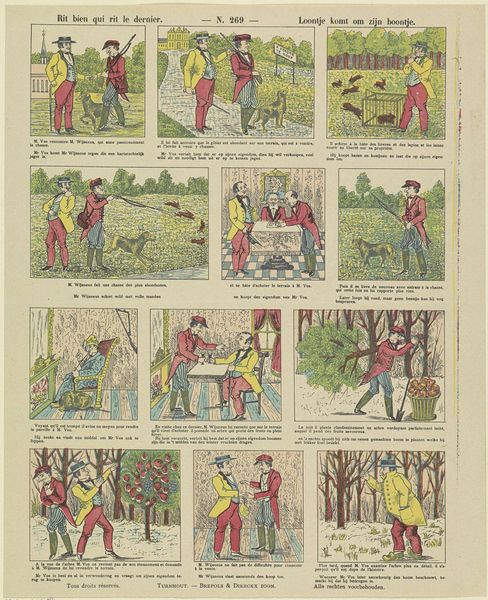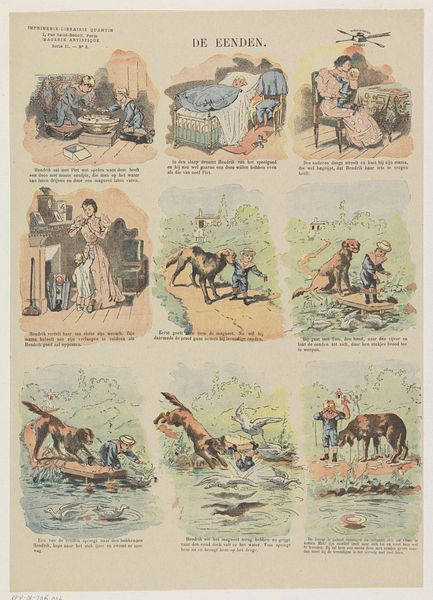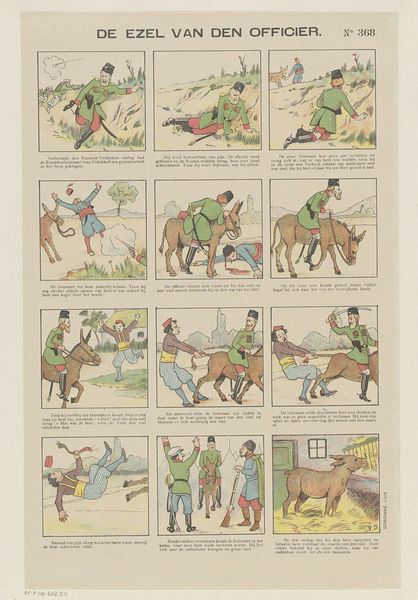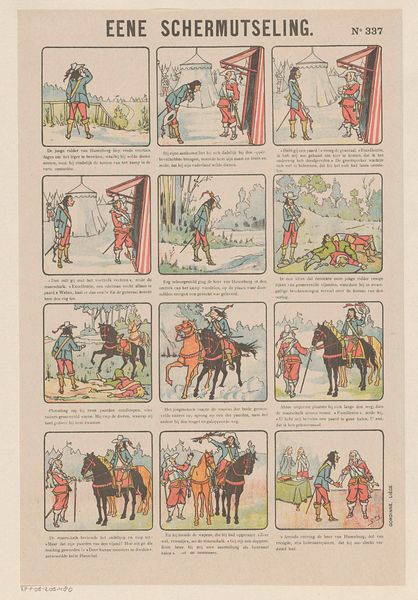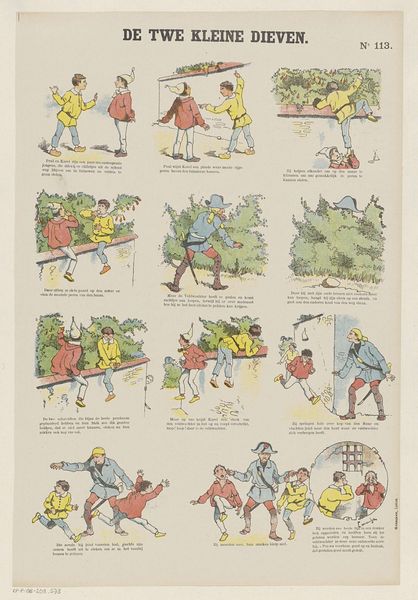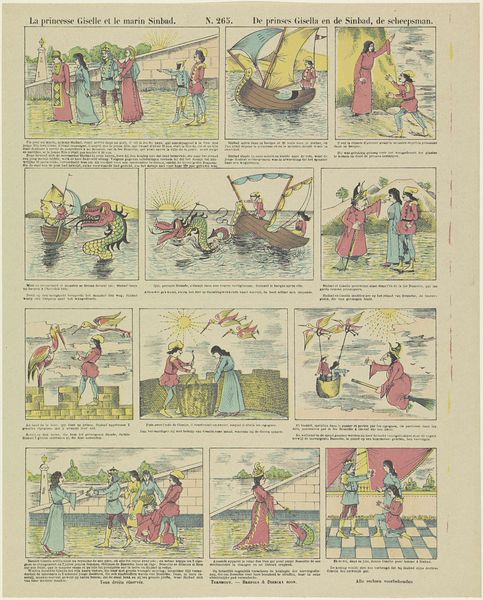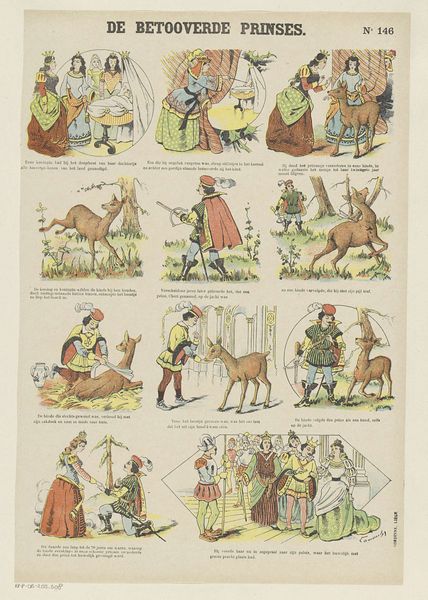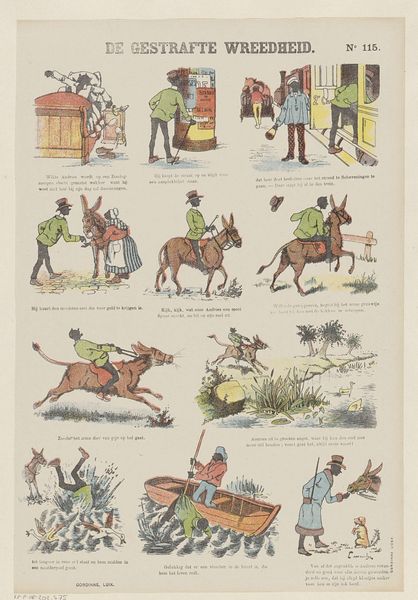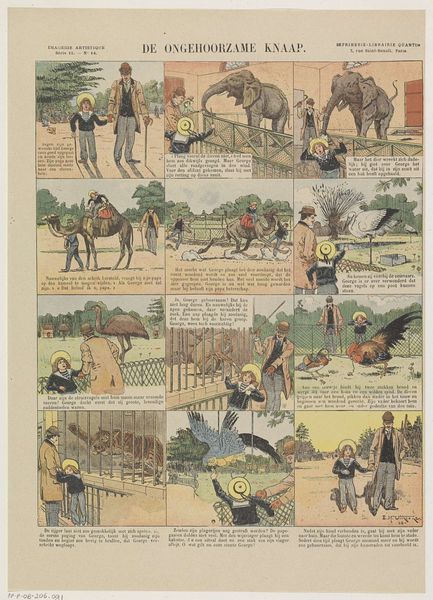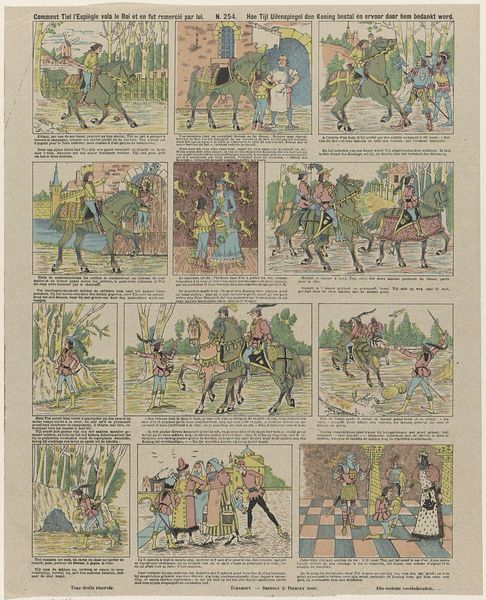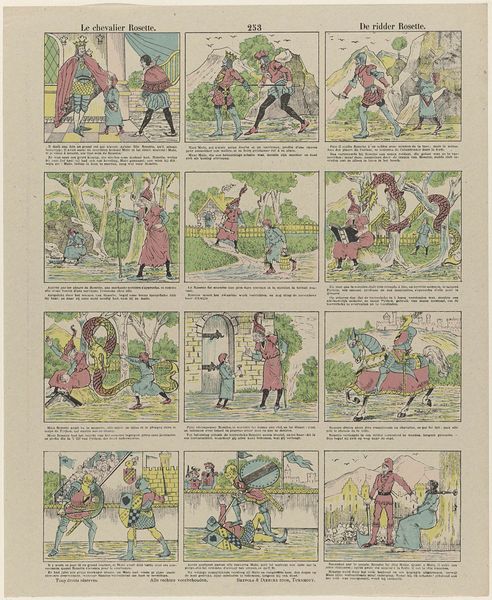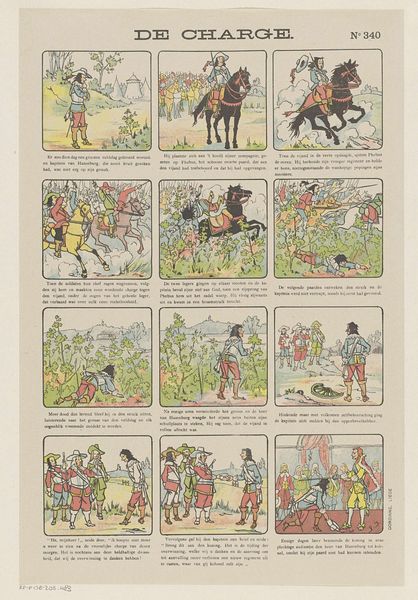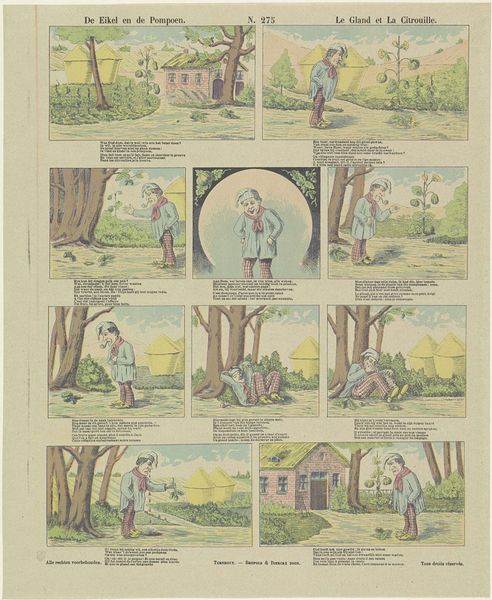
graphic-art, print, etching
#
graphic-art
#
narrative-art
#
comic strip
# print
#
etching
#
folk-art
#
comic
Dimensions: height 373 mm, width 312 mm
Copyright: Rijks Museum: Open Domain
Curator: This etching, entitled "De vos en de ooievaar / Le renard et la cigogne," which translates to "The Fox and the Stork," comes to us from the studio of Brepols & Dierckx zoon between 1833 and 1911. What are your initial thoughts? Editor: It has such a familiar feeling to it. This feels light-hearted in its palette, but the composition…each of these little scenes, like panels in a comic, it seems very purposeful, almost instructional. The limited color palette feels very economical. Curator: Exactly. The layout is crucial here. We're looking at a narrative print, probably circulated widely. These animal fables, rendered as sequential art, served a very important public function, spreading moral lessons. Consider the historical context; the literacy rates, the modes of communication... Editor: Yes, that's right. These images become accessible beyond language. Look at the way they handle the domestic spaces here - such a variety of textures and simple methods. Consider what's actually involved in printing this on what looks like quite a light paper. How accessible were these? Were these really available to everyone, or more affordable to the burgeoning middle class? Curator: It speaks to larger questions about the democratization of knowledge and art. This was probably part of a series of works of very wide distribution. And I think that in turn shaped popular tastes and preferences, what stories gained prominence. Editor: Definitely, and think about the means of making that print; what materials were accessible to Brepols & Dierckx zoon? How does labor intersect with this imagery? Even these pale washes of color involve specific material choices. Curator: Precisely! The colors here were chosen not just aesthetically, but also based on what dyes and pigments were readily available and relatively inexpensive. The politics of imagery is inseparable from the economy of its production. Editor: It leaves me pondering the ingenuity behind something so ostensibly simple. To mass-produce images for teaching purposes, that is an undertaking. Curator: Agreed. It reminds me of the power of accessible art to shape our collective consciousness and moral frameworks. I am pleased that we could review and give some additional details about this print.
Comments
No comments
Be the first to comment and join the conversation on the ultimate creative platform.
